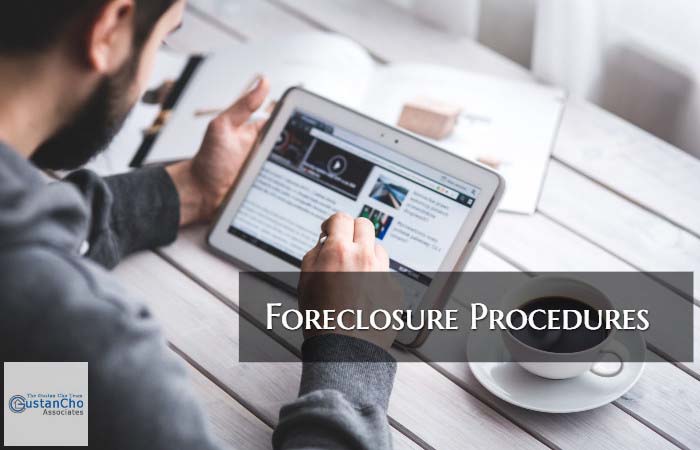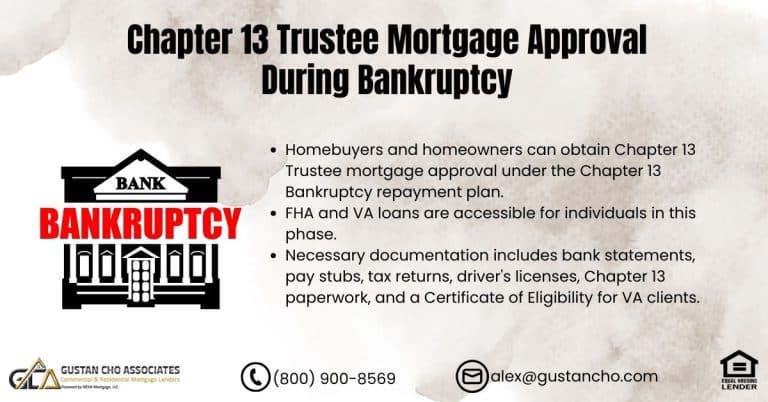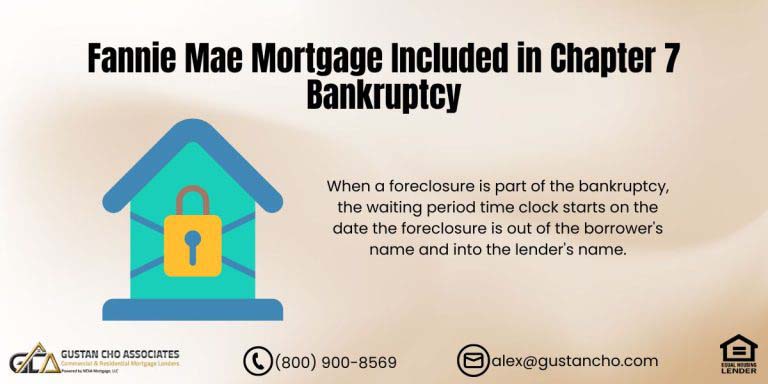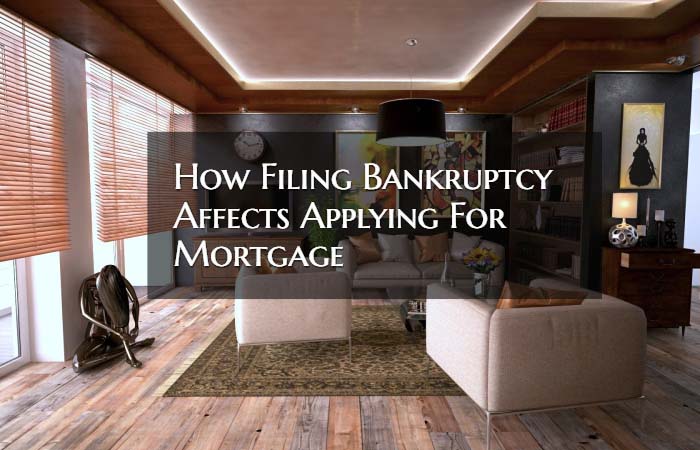This BLOG On What Are The Foreclosure Procedures And Process Was UPDATED And PUBLISHED On July 2nd, 2020
- What they became, after the real estate meltdown and credit crash of 2008, was the end all be all of residential lending
- At one time, Fannie Mae, Freddie Mac, and FHA accounted for 4/5ths of the market
- This kept mortgage rates low, as Uncle Sam now chooses to back long term interest rates
- What it also did is to minimize non-traditional lending and Alternative non-prime lending to a minimum
- As the foreclosure inventory grew, and turn times for taking those properties (non-performing assets) slowed at the same time
- Banks and credit unions not in the big seven categories (Chase, Bank Of America, Wells Fargo, U.S. Bank, Suntrust, Fifth Third, and Citibank) took a seat in the viewing section for a couple of years
- Volume fell, as these banks market share only grew
- Less lenders-less options, slower service, higher fees, you get the picture
In this article, we will discuss and cover What Are The Foreclosure Procedures And Process.
Foreclosure Procedures
Foreclosure procedures in the United States are divided into two categories:
- Judicial
- Trustee
Some states use both, some pick one:
- If you live in a judicial state, as I do in Illinois, then foreclosure has to be approved by a judge before it can be handled by the County Sheriff’s department
- If you live in a non-judicial state such as the Golden State, the case gets looked at by a Trustee
The lender cannot come after you in a trustee sale for a deficiency unlike in a judicial one.
Timeline On Foreclosure Procedures
- New York has an average process to sale date(the date that foreclosure is finalized with the court or trustee, the eviction process depends on the state, and sometimes the time of year) of 445 days
- Whereas Texas, which is trustee mostly, takes 27 days
- The slower process has its benefits, in particular for the ones trying to stay in their home
- The longer process costs the lender more money
But most of all depress the market for a longer period of time.
Qualifying For Mortgage After Foreclosure
Gustan Cho Associates Mortgage Group represents a national direct lender with no mortgage overlays on government and conventional loans. We do not have a second tier of lending guidelines, called overlays. For borrowers who have already left the house vacant, this also has a negative effect if they are looking to rebound on their credit.
- It takes a minimum of 3 years after foreclosure case is closed with the court or trustee
- The waiting period starts from the recorded date of the foreclosure and not the date the keys were turned in
- If the process is taking longer than average, let’s say 3-5 years, then the borrower may have to wait up to 8 years before they can apply for an FHA loan, and 10 years before they can apply for a Fannie Mae/Freddie Mac loan
- Consult a legal professional to go over your options (modification, deed in lieu of foreclosure, foreclosure delay, bankruptcy)
- Consult a realtor to see if you can sell the house and or be able to rent in the area for a smaller monthly amount
- Finally, speak to loan professionals to go over options in regards to refinance (HARP), or realistic time frame as to how long you will have to wait to buy again (if you even want to) or what you can do to fix credit.
How Long Does Foreclosure Process Take
The Foreclosure Process is a long process and does not happen overnight.- The good news is those home buyers can qualify for home loans after the foreclosure process
- In order to qualify for mortgage loans after the foreclosure process, the foreclosure needs to have been finalized
- There are waiting period after foreclosure and/or another housing event with government loans and conventional loans
- However, Gustan Cho Associates is a national lender with no lender overlays on government and conventional loans
- Gustan Cho Associates has a special alternative financing loan program called NON-QM Loans
- There is no waiting period after foreclosure, deed in lieu of foreclosure, short-sale with non-QM loans
- Home Buyers can qualify for NON-QM Loans one day after foreclosure. 20% down payment is required
How Does The Foreclosure Process Work?
When a homeowner cannot make his or her mortgage payments and defaults on his or her agreement to make timely mortgage payments, a foreclosure will occur and the foreclosure process will be initiated by the lender.- The ultimate outcome from the foreclosure process is the subject property being taken over by the mortgage lender and sold
- Most Lenders do not want to take the property back
- Short Sale
- Deed In Lieu Of Foreclosure
- Loan Modification
First Stage Of Foreclosure Process
The foreclosure process takes months if not over a year. Possibly years depending on the geographical region the property is located and the laws of the state of the subject property. It also depends on the mortgage lender.- When a borrower falls behind on their mortgage payment and cannot come into a repayment plan with their lender, the lender will initiate foreclosure proceedings
- This normally does not happen unless the homeowner is at least four or more months behind
- The lender will give the homeowner an opportunity to pay the payments that have been behind
- The lender may offer the homeowner to enter into a payment plan
- Homeowners can negotiate with their lenders and make payment arrangements
Foreclosure Timeline
For those homeowners that cannot enter into a repayment agreement with the lender, the mortgage lender will start the foreclosure process.- The first stage of the foreclosure process happens if the homeowner has missed at least four monthly payments
- Sometimes the foreclosure process is not initiated until six or more months after the first missed payment
- The lender will request the appointment of a trustee to record a NOD, which is a Notice of Default
- This is recorded at the County Recorder of Deeds Office in which the subject property is located at
- The foreclosure process will give the homeowner notice once this is filed and this is when the official reinstatement period starts
Foreclosure Proceedings
In the event, if the mortgage default is not brought current within three months, the courts will issue a foreclosure date for the sale of the subject property.- The borrower will be receiving a notice of sale notice
Trustee Sale During Foreclosure Process
A designated date, time, and location will be published through the publication of the notice of sale for the foreclosure trustee sale. It is normally held at a county site where the subject property is located at.- The sale is an auction and will be auctioned off as a public auction and offered to the highest bidder
- The winning bidder needs to have a certain percentage of cash down payment and needs to come up with the balance within the next 24 or 48 hours or he or she will lose the initial cash deposit
Foreclosure Bidding Auction Process Of Subject Property
The opening bid price for the subject property is set by the mortgage lender who owns the foreclosed property.- The opening bid is normally the balance of the mortgage balance of the subject property along with the accrued interest, attorney costs, and other fees the mortgage lender has accrued
- In the event, if there are no bidders for the property, the property will be bought by the lender’s representative which is normally an attorney
- Many times, the lender will purchase the property back and will hold it as their asset for future resale
- This is often called Real Estate Owned, often referred to as an REO property
- When a foreclosed property is auctioned off at the sheriff’s sale whether, by a public bidder or the lender, all secondary and junior liens are expunged
Situations Where Homeowners Go Into Foreclosure
There are hundreds of examples where homeowners face pending foreclosure.- Some of the common situations are when a homeowner loses his or her business or job or a demotion from their current job
- Many employers have made full-timers into part-timers too due to the Great Recession
- An unexpected prolonged illness is another common reason
- Illness or medical issues where homeowners are hospitalized and cannot work due to their medical situation or illness stops the flow of regular income
- Other cases are when the working spouse dies
- The household cannot afford to make the monthly housing payment due to the drop in income or no income
- Divorce is another common reason where homeowners not just face foreclosure but also are forced into bankruptcy
- Excessive credit obligations and unexpected major housing repairs can set any homeowner back
Alternatives To Avoid Foreclosure
Lenders do not want to be property owners and the last thing they want is the home.- They will work with homeowners to avoid foreclosure
- Many mortgage lenders have a work out department where they have departments specifically assigned to work with homeowners in distress
- The first thing distressed homeowners should do if they anticipate future problems in paying mortgage payments is contact lender before falling behind
- Homeowners who are current on mortgage payments but anticipate hardship in the near future should contact their lender
- Most lenders are more likely to work with them while they are current with mortgage payment before borrower goes in arrears
- Borrowers who have a temporary situation where they just got laid off and can find employment in a month or two, the lender might offer a short term forbearance agreement
- Short term payment agreements can be offered to borrowers with a three to six-month reprieve
- Lenders can work out a repayment plan or add the arrears to the back of mortgage balance
Loan Modification And Mortgage Loan Workout
A loan modification is where a lender will restructure the current loan so the borrower is able to pay their monthly housing payments with no struggle. Many lenders will want to know the finances of the homeowner before entertaining a loan modification. Lenders can structure it by forgiving some of the balance owed or lowering the mortgage rate to reduce monthly mortgage payment so it can be an affordable payment. Loan Modifications are only available to homeowners who have documented full-time verifiable income.- This normally happens when borrowers are upside down on their home where mortgage balance is higher than the value of the home
- The lender can also do a partial claim
- They can make a separate note to borrowers like a second mortgage to make the missed back mortgage payment
Advice On Stopping Foreclosure Process
Homeowners who do not contact their mortgage lender and avoid talking to them hoping that their financial situation will get better may be too late in stopping foreclosure process:
- If the lender does file a notice of default, it might be too late in stopping foreclosure process
Alternatives To Stopping Foreclosure Process: Sell, Short Sale, Deed In Lieu
A homeowner facing foreclosure should not procrastinate and act on ways of avoiding foreclosure, whether it is contacting their lender or trying to sell their home.- Contact a realtor in the area and get market analysis to find out the value of the home
- If the home is upside down where homeowners owe more on mortgage balance than the value of the property, see if the lender is willing to accept a short sale
- Need permission by the lender to sell the home below the price of what is owed on the mortgage balance
Filing Bankruptcy To Stopping Foreclosure Process
Filing Bankruptcy is one way of stopping the foreclosure process. There are two types of bankruptcies:- Chapter 7 Bankruptcy
- Chapter 13 Bankruptcy
NON-QM Loans Require No Waiting Period After Bankruptcy And Foreclosure
Home Buyers can qualify for non-qm loans with no waiting period after the following:- Foreclosure
- Deed In Lieu Of Foreclosure
- Short Sale
Qualifying For Mortgage After Foreclosure With NO Waiting Period After Housing Event
Home Buyers can qualify for mortgage home loans after the following:- Foreclosure
- Deed In Lieu Of Foreclosure
- Short Sale
- Loan Modification
- However, NON-QM Loans are portfolio loans offered by Gustan Cho Associates with no waiting period after foreclosure, deed in lieu of foreclosure, and short sale
- There is a one-year waiting period to qualify for NON-QM Loans after Chapter 7 Bankruptcy discharged date
- NON-QM Loans require 10% to 20% down payment
- Mortgage Rates are higher than government and conventional loans
- NON-QM Loans are normally used as bridge loans until borrowers qualify for traditional government and conventional loans









